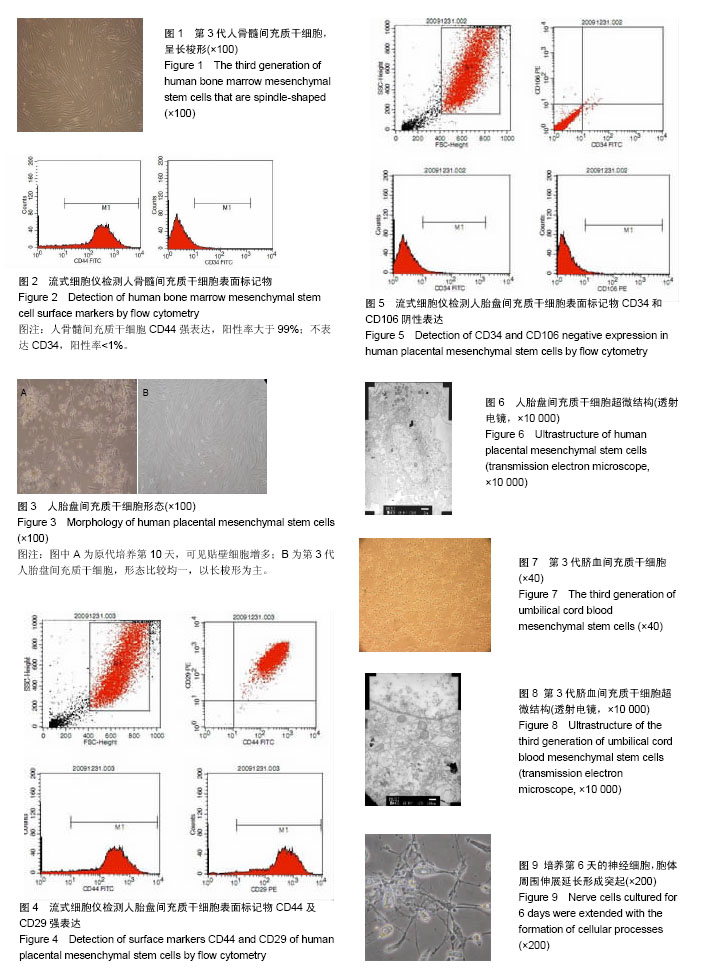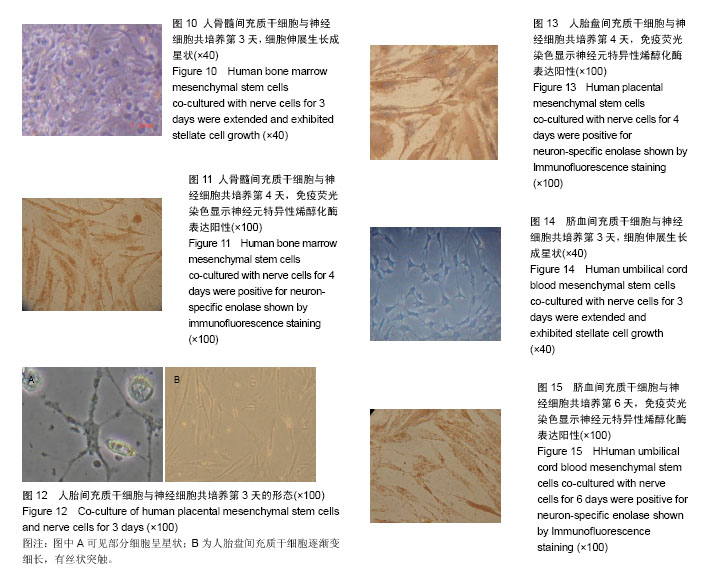| [1] Yan X, Xu N, Meng C, et al. Generation of induced pluripotent stem cells from human mesenchymal stem cells of parotid gland origin. Am J Transl Res. 2016;8(2):419-432.[2] Li X, Bai J, Ji X, et al. Comprehensive characterization of four different populations of human mesenchymal stem cells as regards their immune properties, proliferation and differentiation. Int J Mol Med. 2014;34(3):695-704.[3] Mouiseddine M, François S, Semont A, et al. Human mesenchymal stem cells home specifically to radiation-injured tissues in a non-obese diabetes/severe combined immunodeficiency mouse model. Br J Radiol. 2007;80 Spec No 1:S49-55.[4] Cordonnier T, Langonné A, Corre P, et al. Osteoblastic differentiation and potent osteogenicity of three-dimensional hBMSC-BCP particle constructs. J Tissue Eng Regen Med. 2014;8(5):364-376.[5] Alfred R, Taiani JT, Krawetz RJ, et al. Large-scale production of murine embryonic stem cell-derived osteoblasts and chondrocytes on microcarriers in serum-free media. Biomaterials. 2011;32(26):6006-6016.[6] Sanchez-Ramos J, Song S, Cardozo-Pelaez F, et al. Adult bone marrow stromal cells differentiate into neural cells in vitro. Exp Neurol. 2000;164(2):247-256.[7] Woodbury D, Reynolds K, Black IB. Adult bone marrow stromal stem cells express germline, ectodermal, endodermal, and mesodermal genes prior to neurogenesis. J Neurosci Res. 2002;69(6):908-917.[8] Woodbury D, Schwarz EJ, Prockop DJ, et al. Adult rat and human bone marrow stromal cells differentiate into neurons. J Neurosci Res. 2000;61(4):364-370.[9] Kopen GC, Prockop DJ, Phinney DG. Marrow stromal cells migrate throughout forebrain and cerebellum, and they differentiate into astrocytes after injection into neonatal mouse brains. Proc Natl Acad Sci U S A. 1999;96(19):10711-10716.[10] Yan X, Xu N, Meng C, et al. Generation of induced pluripotent stem cells from human mesenchymal stem cells of parotid gland origin. Am J Transl Res. 2016;8(2):419-432.[11] Zhang H, Huang Z, Xu Y, et al. Differentiation and neurological benefit of the mesenchymal stem cells transplanted into the rat brain following intracerebral hemorrhage. Neurol Res. 2006;28(1):104-112.[12] Marappagounder D, Somasundaram I, Dorairaj S, et al. Differentiation of mesenchymal stem cells derived from human bone marrow and subcutaneous adipose tissue into pancreatic islet-like clusters in vitro. Cell Mol Biol Lett. 2013; 18(1):75-88.[13] Tasev D, Konijnenberg LS, Amado-Azevedo J, et al. CD34 expression modulates tube-forming capacity and barrier properties of peripheral blood-derived endothelial colony- forming cells (ECFCs). Angiogenesis. 2016;19(3):325-338.[14] Zhang H, Yu N, Zhou Y, et al. Construction and characterization of osteogenic and vascular endothelial cell sheets from rat adipose-derived mesenchymal stem cells. Tissue Cell. 2016;48(5):488-495.[15] Liang G, Li S, Du W,et al. Hypoxia regulates CD44 expression via hypoxia-inducible factor-1α in human gastric cancer cells. Oncology Letters. 2017;13:967-972.[16] Abreu Velez AM, Upegui Zapata YA, Howard MS. Periodic Acid-Schiff Staining Parallels the Immunoreactivity Seen By Direct Immunofluorescence in Autoimmune Skin Diseases. N Am J Med Sci. 2016;8(3):151-155.[17] Asadi A, Bruin JE, Kieffer TJ. Characterization of Antibodies to Products of Proinsulin Processing Using Immunofluorescence Staining of Pancreas in Multiple Species. J Histochem Cytochem. 2015;63(8):646-662.[18] Mannoji C, Koda M, Kamiya K, et al. Transplantation of human bone marrow stromal cell-derived neuroregenrative cells promotes functional recovery after spinal cord injury in mice. Acta Neurobiol Exp (Wars). 2014;74(4):479-488.[19] Fedyanin M, Anna P, Elizaveta P, et al. Role of Stem Cells in Colorectal Cancer Progression and Prognostic and Predictive Characteristics of Stem Cell Markers in Colorectal Cancer. Curr Stem Cell Res Ther. 2017;12(1):19-30.[20] Lee M, Jeong SY, Ha J, et al. Low immunogenicity of allogeneic human umbilical cord blood-derived mesenchymal stem cells in vitro and in vivo. Biochem Biophys Res Commun. 2014;446(4):983-989.[21] 王志勇,王永安,熊敏,等.脑红蛋白基因修饰的骨髓间充质干细胞在治疗大鼠脊髓损伤的保护作用[J].中华实验外科杂志,2015, 32(6):1378-1380.[22] 王昌铭,滕军放,高唱,等.骨髓间充质干细胞颈内动脉移植在血管性痴呆大鼠脑内存活迁移及对胆碱能系统的影响[J].中华老年心脑血管病杂志,2014,16(2):196-199.[23] 陈玉玺,王晓莉,牟青杰,等.骨髓间充质干细胞对脑缺血大鼠星形胶质细胞影响的实验研究[J].医学研究生学报,2013,26(6):564-567.[24] 刘明,夏玉军,张明,等.三维球体间充质干细胞移植对大鼠缺血再灌注损伤脑组织Nogo-A及NgR表达的影响[J].第二军医大学学报, 2015,36(10):1087-1091.[25] 丁红芳,丁慧芳,高欣义,等.胎盘间充质干细胞治疗大鼠缺氧缺血性脑病的实验研究[J].实用医学杂志,2013,29(5): 711-714.[26] Haque A, Ray SK, Cox A, et al. Neuron specific enolase: a promising therapeutic target in acute spinal cord injury. Metab Brain Dis. 2016;31(3):487-495.[27] 赵俊暕,陈乃耀,石峻,等.人脐血间充质干细胞移植对创伤性脑损伤大鼠VEGF分泌及血管新生的影响[J].中国神经免疫学和神经病学杂志,2013,20(4):267-273.[28] 陈镭,惠国桢,张赛,等.人脐血间充质干细胞移植促进大鼠颅脑创伤后神经功能的恢复[J].中华创伤杂志,2009,25(6):498-502.[29] 颜小华,黄瑞滨.脐血间充质干细胞静脉移植治疗新生大鼠缺氧缺血性脑损伤的时效性研究[J].中国小儿急救医学,2006,13(4): 322-324.[30] Sherief LM, Beshir M, Salah HE. Neuron-specific enolase in cerebrospinal fluid as a neurochemical marker for brain damage in acute lymphoblastic leukemia. Egypt J Haematol. 2016;41(2):77-80.[31] Bao X, Ren T, Huang Y, et al. Bortezomib induces apoptosis and suppresses cell growth and metastasis by inactivation of Stat3 signaling in chondrosarcoma. Int J Oncol. 2017;50(2): 477-486.[32] Musa ZA, Qasim BJ, Ghazi HF, et al. Diagnostic roles of calretinin in hirschsprung disease: A comparison to neuron-specific enolase. Saudi J Gastroenterol. 2017;23(1): 60-66.[33] Zhang Y, Schedle A, Matejka M, et al. The proliferation and differentiation of osteoblasts in co-culture with human umbilical vein endothelial cells: An improved analysis using fluorescence-activated cell sorting. Cell Mol Biol Lett. 2010; 15(4):517-529.[34] Liu Y, Shao LL, Pang W, et al. Induction of adhesion molecule expression in co-culture of human bronchial epithelial cells and neutrophils suppressed by puerarin via down-regulating p38 mitogen-activated protein kinase and nuclear factor κB pathways. Chin J Integr Med. 2014;20(5):360-368.[35] Xiong L, Huang C, Chen XF, et al. Comparison of fermentation by mono-culture and co-culture of oleaginous yeasts for ABE (acetone- butanol- ethanol) fermentation wastewater treatment. Journal of Environmental Chemical Engineering. 2016;4(4):3803-3809.[36] Zhao S, Yuan L, Wang J, et al. A novel and facile approach to imaging nanoparticles transport across Transwell filter grown cell monolayer in real-time and in situ under confocal laser scanning microscopy. Biol Pharm Bull. 2012;35(3):335-345.[37] Wu Y, Li K, Zuo H, et al. Primary neuronal-astrocytic co-culture platform for neurotoxicity assessment of di-(2-ethylhexyl) phthalate. J Environ Sci (China). 2014; 26(5):1145-1153.[38] Yang X, Yan H, Zhai Z, et al. Neutrophil elastase promotes proliferation of HaCaT cell line and transwell psoriasis organ culture model. Int J Dermatol. 2010;49(9):1068-1074.[39] 谢婷婷,杨乃龙,徐丽丽,等.尿酸影响人骨髓间充质干细胞成骨分化过程中BMP-2表达[J].现代生物医学进展, 2015,15(12): 2251-2256.[40] 徐丽丽,孙晓娟,郝秀仙,等.在复合成分培养基中骨髓间充质干细胞的诱导成骨[J].中国组织工程研究, 2015,19(10):1501-1505.[41] 邵帅,周晨红,徐丽丽.体外诱导骨髓与脐血间充质干细胞向成骨细胞分化及其成骨活性的比较[J].中国组织工程研究,2015,19 (23):3652-3657.[42] 王潇丽,徐丽丽,杨乃龙.尿酸对人骨髓间充质干细胞成骨分化过程中Wnt信号通路的影响[J].中国组织工程研究,2015, 19(28): 4472-4477.[43] Liu Y, Wang Y, Yang N, et al. In silico analysis of the molecular mechanism of postmenopausal osteoporosis. Mol Med Rep. 2015;12(5):6584-6590.[44] Han F, Guo Y, Xu L, et al. Induction of Haemeoxygenase-1 Directly Improves Endothelial Function in Isolated Aortas from Obese Rats through the Ampk-Pi3k/Akt-Enos Pathway. Cell Physiol Biochem. 2015;36(4):1480-1490.[45] 李颖,王潇丽,王军,等. GLP-1受体激动剂艾塞那肽对MG-63细胞增殖及成骨分化的影响[J].中国骨质疏松杂志,2016,22(4): 50-53.[46] Li JJ, Li Y, Wang J, et al.Correlation between vitamin D levels and static postural balance of both feet in type 2 diabetes mellitus patients. Int J Clin Exp Med .2016;9(6):11651-11656. |
.jpg)


.jpg)